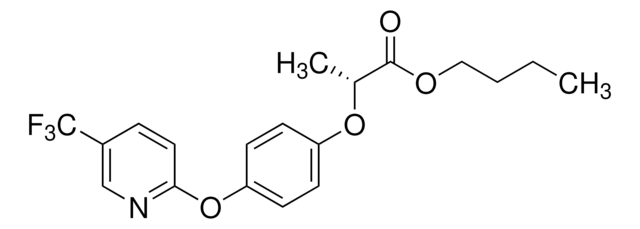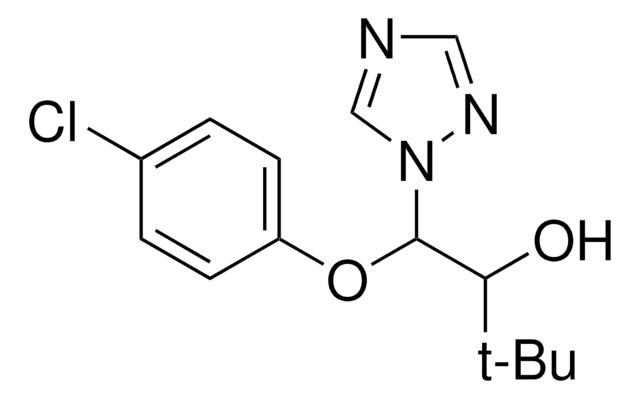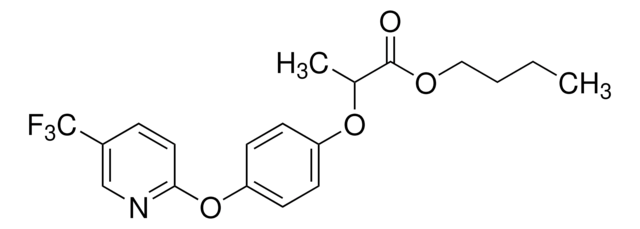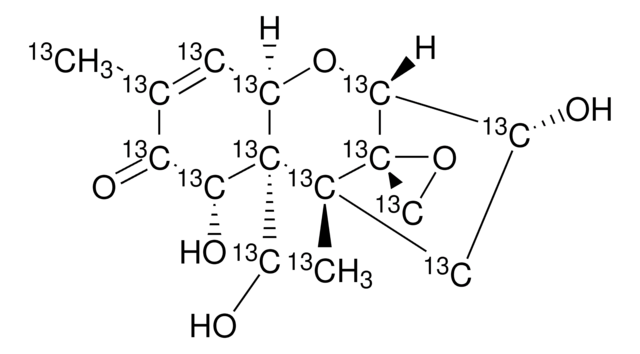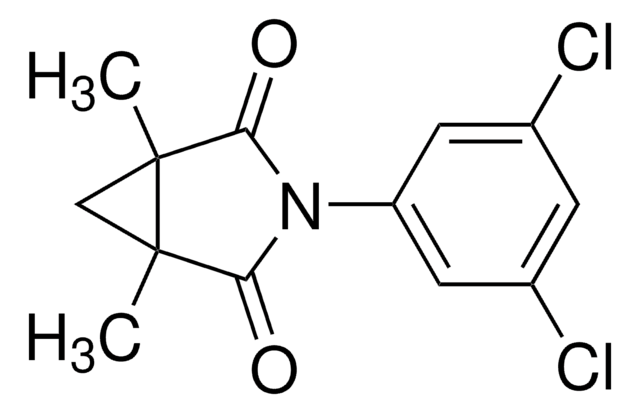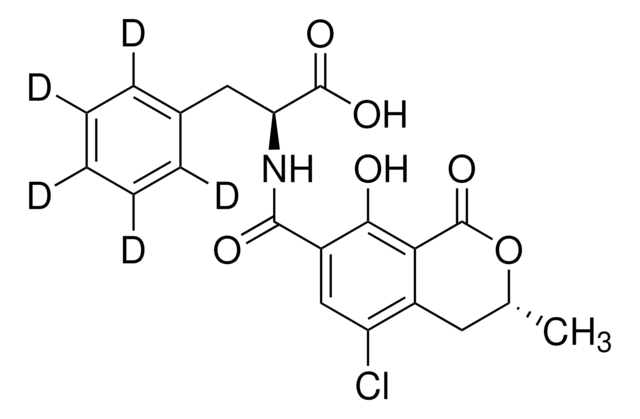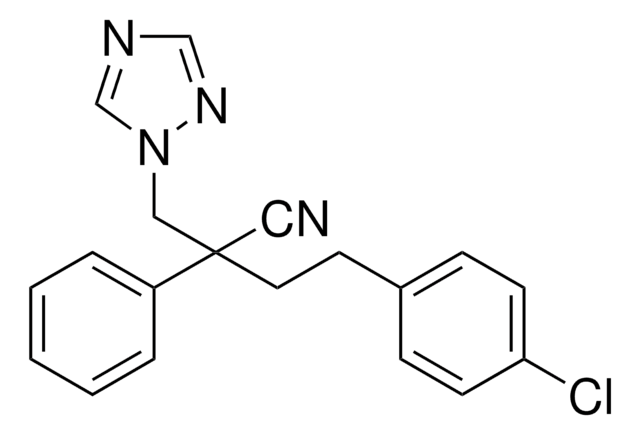36783
Fluazifop-butyl
PESTANAL®, analytical standard
About This Item
Prodotti consigliati
Grado
analytical standard
Nome Commerciale
PESTANAL®
Durata
limited shelf life, expiry date on the label
applicazioni
agriculture
cleaning products
cosmetics
environmental
food and beverages
personal care
Formato
neat
Stringa SMILE
CCCCOC(=O)C(C)Oc1ccc(Oc2ccc(cn2)C(F)(F)F)cc1
InChI
1S/C19H20F3NO4/c1-3-4-11-25-18(24)13(2)26-15-6-8-16(9-7-15)27-17-10-5-14(12-23-17)19(20,21)22/h5-10,12-13H,3-4,11H2,1-2H3
VAIZTNZGPYBOGF-UHFFFAOYSA-N
Cerchi prodotti simili? Visita Guida al confronto tra prodotti
Note legali
Avvertenze
Danger
Indicazioni di pericolo
Consigli di prudenza
Classi di pericolo
Aquatic Acute 1 - Aquatic Chronic 1 - Repr. 1B
Codice della classe di stoccaggio
6.1C - Combustible acute toxic Cat.3 / toxic compounds or compounds which causing chronic effects
Classe di pericolosità dell'acqua (WGK)
WGK 3
Punto d’infiammabilità (°F)
Not applicable
Punto d’infiammabilità (°C)
Not applicable
Dispositivi di protezione individuale
Eyeshields, Gloves, type ABEK (EN14387) respirator filter
Certificati d'analisi (COA)
Cerca il Certificati d'analisi (COA) digitando il numero di lotto/batch corrispondente. I numeri di lotto o di batch sono stampati sull'etichetta dei prodotti dopo la parola ‘Lotto’ o ‘Batch’.
Possiedi già questo prodotto?
I documenti relativi ai prodotti acquistati recentemente sono disponibili nell’Archivio dei documenti.
Il team dei nostri ricercatori vanta grande esperienza in tutte le aree della ricerca quali Life Science, scienza dei materiali, sintesi chimica, cromatografia, discipline analitiche, ecc..
Contatta l'Assistenza Tecnica.